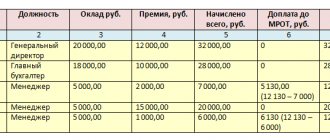17 working days and 14 days off | 3
19 working days and 10 days off | 2
21 working days and 10 days off
|
Number of days (calendar/working/weekends and holidays) and working hours in 2020
| Amount of days | Working hours (in hours) | |||||
| Calendar days | Work days | Weekends and holidays | with a 40 hour work week | with a 36-hour work week | with a 24-hour work week | |
| January | 31 | 17 | 14 | 136 | 122,4 | 81,6 |
| February | 29 | 19 | 10 | 152 | 136,8 | 91,2 |
| March | 31 | 21 | 10 | 168 | 151,2 | 100,8 |
| I quarter | 91 | 57 | 34 | 456 | 410,4 | 273,6 |
| April | 30 | 22 | 8 | 175 | 157,4 | 104,6 |
| May | 31 | 17 | 14 | 135 | 121,4 | 80,6 |
| June | 30 | 21 | 9 | 167 | 150,2 | 99,8 |
| II quarter | 91 | 60 | 31 | 477 | 429 | 285 |
| 1st half of the year | 182 | 117 | 65 | 933 | 839,4 | 558,6 |
| July | 31 | 23 | 8 | 184 | 165,6 | 110,4 |
| August | 31 | 21 | 10 | 168 | 151,2 | 100,8 |
| September | 30 | 22 | 8 | 176 | 158,4 | 105,6 |
| III quarter | 92 | 66 | 26 | 528 | 475,2 | 316,8 |
| October | 31 | 22 | 9 | 176 | 158,4 | 105,6 |
| November | 30 | 20 | 10 | 159 | 143 | 95 |
| December | 31 | 23 | 8 | 183 | 164,6 | 109,4 |
| IV quarter | 92 | 65 | 27 | 518 | 466 | 310 |
| II half of the year | 184 | 131 | 53 | 1046 | 941,2 | 626,8 |
| 2020 | 366 | 248 | 118 | 1979 | 1780,6 | 1185,4 |
| Average monthly working hours | 164,9 | 148,4 | 98,8 | |||
3 months free use all the features of Kontur.Externa
Try it
For which employees is a shortened working week established by law?
The Labor Code of the Russian Federation uses the concept of “reduced working hours”, which is established in weeks.
For employees for whom reduced working hours are not established by law, the employer has the right to set working hours of no more than 40 hours per week. This is normal (as opposed to reduced) working hours.
Shortened working hours are established:
for workers under sixteen years of age - no more than 24 hours a week;
for workers from sixteen to eighteen years old - no more than 35 hours per week;
for disabled people of group I or II - no more than 35 hours per week;
for workers with hazardous working conditions of 3 or 4 degrees or dangerous working conditions (determined based on the results of a special assessment of working conditions) - no more than 36 hours per week.
Moreover, if the above-mentioned employees have not reached 18 years of age, they study in educational institutions (organizations) and work during the academic year in their free time, then the maximum duration of their working hours cannot exceed half of the above-mentioned number of hours per week.
Also, reduced working hours are established for:
- women working in the Far North and equivalent areas, and women working in rural areas - a 36-hour working week (unless a shorter working week is provided for by law for these women on other grounds);
- for medical workers - no more than 39 hours per week (depending on position and (or) specialty);
- for teaching staff - no more than 36 hours per week (depending on specialty, position).
The length of working time for a particular employee is established by an employment contract on the basis of an industry (inter-industry) agreement, a collective agreement, taking into account the results of a special assessment of working conditions (for hazardous working conditions), taking into account acts of state bodies (for medical and teaching workers).
We must also remember that the law establishes the maximum duration of daily work (shift), which differs according to the above categories of employees. Therefore, the duration of their working hours should not exceed not only the maximum established norm for the week, but also for each working day (shift).
There is an exception: if at the enterprise it is impossible, due to production (work) conditions, to comply with the established daily or weekly work duration and therefore summarized recording of working time is introduced, then the established duration of working time for the accounting period (month, quarter, half-year, year; for employees in jobs with harmful and/or dangerous working conditions, the accounting period cannot exceed three months).
The normal number of working hours for the accounting period is determined based on the weekly working hours established for a specific category of workers. For example, if for an employee the established working time is 35 hours per week, the accounting period is one month, then the standard working time for this employee, say, for March 2020 will be 147 hours:
- 35 hours: 5 days a week (to calculate the hourly rate of daily work, a five-day work week is taken) = 7 hours a day,
— 7 hours x 21 days (21 working days in March 2020) = 147 hours.
Legal basis:
According to Article 91 of the Labor Code of the Russian Federation, normal working hours cannot exceed 40 hours per week.
Article 92 of the Labor Code of the Russian Federation establishes reduced working hours for certain categories of workers:
for workers under the age of sixteen - no more than 24 hours a week;
for workers aged sixteen to eighteen years - no more than 35 hours per week;
for employees who are disabled people of group I or II - no more than 35 hours per week;
for workers whose working conditions at their workplaces, based on the results of a special assessment of working conditions, are classified as hazardous working conditions of the 3rd or 4th degree or hazardous working conditions - no more than 36 hours per week.
The length of working time for a particular employee is established by an employment contract on the basis of an industry (inter-industry) agreement and a collective agreement, taking into account the results of a special assessment of working conditions.
On the basis of an industry (inter-industry) agreement and a collective agreement, as well as the written consent of the employee, formalized by concluding a separate agreement to the employment contract, the working hours specified in paragraph five of part one of Article 92 may be increased, but not more than up to 40 hours per week with payment to the employee of a separately established monetary compensation in the manner, amount and on the terms established by industry (inter-industry) agreements and collective agreements.
The length of working time of persons under the age of eighteen who are receiving general education or secondary vocational education and who combine education with work during the academic year cannot exceed half of the norms established by part one of this article for persons of the corresponding age.
The Code and other federal laws may establish reduced working hours for other categories of workers (teaching, medical and other workers).
According to Article 320 of the Labor Code of the Russian Federation, for women working in the Far North and equivalent areas, a collective agreement or employment contract establishes a 36-hour working week, unless a shorter working week is provided for them by federal laws. In this case, wages are paid in the same amount as for a full working week.
Article 333 of the Labor Code of the Russian Federation establishes that for teaching staff a reduced working time of no more than 36 hours per week is established.
Article 350 determines that for medical workers a reduced working time of no more than 39 hours per week is established. Depending on the position and (or) specialty, the working hours of medical workers are determined by the Government of the Russian Federation.
In accordance with Art. 263.1 of the Labor Code of the Russian Federation, women working in rural areas have the right to establish a reduced working time of no more than 36 hours per week, unless a shorter working week is provided for them by federal laws and other regulatory legal acts of the Russian Federation. In this case, wages are paid in the same amount as for a full working week.
Article 94 of the Labor Code of the Russian Federation determines the duration of daily work (shift).
According to Article 104 of the Labor Code of the Russian Federation, when, due to the conditions of production (work) for an individual entrepreneur, in the organization as a whole, or when performing certain types of work, the established for this category of workers cannot be met (including workers engaged in work with harmful and (or) dangerous conditions labor) daily or weekly working hours, it is allowed to introduce summarized recording of working hours so that the duration of working hours for the accounting period (month, quarter and other periods) does not exceed the normal number of working hours. The accounting period cannot exceed one year, and for recording the working time of workers engaged in work with harmful and (or) dangerous working conditions - three months.
The normal number of working hours for the accounting period is determined based on the weekly working hours established for this category of workers. For employees working part-time (shift) and (or) part-time week, the normal number of working hours for the accounting period is reduced accordingly.
In accordance with paragraph 1. The procedure for calculating the norm of working time for certain calendar periods of time (month, quarter, year) depending on the established duration of working time per week, approved by order of the Ministry of Health and Social Development of the Russian Federation dated August 13, 2009 N 588n, the norm of working time for certain calendar periods of time is calculated according to the calculated schedule a five-day work week with two days off on Saturday and Sunday, based on the duration of daily work (shift):
with a 40-hour work week - 8 hours;
if the working week is less than 40 hours, the number of hours obtained by dividing the established working week by five days.
The length of the working day or shift immediately preceding a non-working holiday is reduced by one hour.
The standard working time for a specific month is calculated as follows: the length of the working week (40, 39, 36, 30, 24, etc. hours) is divided by 5, multiplied by the number of working days according to the calendar of the five-day working week of a specific month and from the resulting number of hours the number of hours in a given month by which working time is reduced on the eve of non-working holidays is subtracted.
The standard working time for the year as a whole is calculated in a similar manner: the length of the working week (40, 39, 36, 30, 24, etc. hours) is divided by 5, multiplied by the number of working days according to the calendar of a five-day working week per year and from from the resulting number of hours, the number of hours in a given year by which working hours are reduced on the eve of non-working holidays is subtracted.
Work and rest calendar for 2020
Non-working holidays in the Russian Federation are (Article 112 of the Labor Code of the Russian Federation):
- 01.01. — 08.01;
- 23.02;
- 08.03;
- 01.05;
- 09.05;
- 12.06;
- 04.11.
In 2020, the New Year holidays 01/04 and 01/05 fall on Saturday and Sunday. They will be transferred to 04.05 and 05.05 (Monday, Tuesday).
A long weekend awaits us:
- from 01.01.20 to 08.01.20;
- from 02/22/20 to 02/24/20;
- from 03/07/20 to 03/09/20;
- from 01.05.20 to 05.05.20;
- from 05/09/20 to 05/11/20.
Shorter working days
Pre-holiday working days in 2020 - 30.04, 08.05, 11.06, 03.11 and 31.12. They will be reduced by 1 hour.
How to calculate labor standards
In determining the normal duration of work, the order of the Ministry of Health dated August 13, 2009 No. 588n plays a decisive role.
The duration of work during the week, established for the employee, determines the norm for him. The basis is a calculation schedule containing five working days and two days of rest, as well as the duration of the working day or shift.
In the case where an employee has a work week of 40 hours, the duration of work per day is 8 hours; with a 36-hour week - 7.2 hours; at 24 hours - 4.8 hours. Existing work and rest regimes are determined by these figures.
On the eve of the holiday, the duration of work is reduced by one hour (Part 1 of Article 95 of the Labor Code of the Russian Federation). In 2020, such days fall on the following dates: 02/22, 03/07, 04/30, 05/08, 06/11, 12/31. If the Government approves the transfer of a day off to a working day, the duration of work is similar to the duration of the working day to which the day off is transferred. Thus, work on the specified dates will be shorter.
For example, let’s compare two months and see what the working hours are in April 2020 and what the working hours are in March 2020.
Calculation example
In April there are 22 working days and 8 days off (calculated as a work week of five working days and two days off).
The normal period (taking into account one day shortened by 1 hour) is:
- with a work week of 40 hours - 175 hours (8 hours x 22 days - 1 hour);
- at 36 hours - 157.4 (7.2 x 22 - 1);
- at 24 hours - 104.6 (4.8 x 22 - 1).
In March there are 20 working days and 11 days off.
The norm for the period will be (also with one shortened day):
- with a work week of 40 hours - 159 hours (8 x 20 - 1 hour);
- at 36 hours - 143 (7.2 x 20 - 1 hour);
- at 24 hours -95 (4.8 x 20 - 1 hour).
What is "working time"?
The Labor Code of the Republic of Belarus (hereinafter referred to as the Labor Code) understands working time as the time during which an employee, in accordance with labor, collective agreements, internal labor regulations, is obliged to be at the workplace and perform his job duties, as well as the time of work performed on the offer , by order or with the knowledge of the employer in excess of the established working hours (overtime, work on public holidays, holidays and weekends).
For reference An employee constantly talks on the phone during working hours to solve personal problems. What to do? Read the article by lawyer T. Golovanova.
As a general rule, in labor relations, time that is not attributable to working hours has no legal significance. This is important to consider, since time worked beyond the established working hours without the employer’s knowledge is not paid. An injury sustained while going to work does not relate to industrial injury, i.e. received during business hours. However, an employee who appears at work in a state of alcoholic intoxication or drinks alcoholic beverages at the workplace may be dismissed on the basis of clause 7, part 1, art. 42 of the Labor Code, even if such actions took place before it began.
For reference Is it possible to fire an employee for drinking alcohol during non-working hours? Read the article by Yurist Gerasimeni, deputy editor-in-chief of the magazine “Lawyer”.
Working time is regulated by the employer by establishing standards for its duration throughout the calendar week (working week) and during the day (working day, work shift).
Determination of working hours
Article No. 91 of the Labor Code states that a working period is a period when a person must perform individual duties. Additionally, this may include other time related to the employee’s work. This includes time:
- preparation of the place of work;
- receiving an order;
- delivery of received products;
- etc.
Legislative acts have approved certain labor time standards. Every company must adhere to them.
The Real Reason for the Forty-Hour Workweek
Creating a culture of consumption of unnecessary goods or services
Here in the West, big business has deliberately cultivated a lifestyle focused on unnecessary spending. Companies from all industries have played a major role in promoting careless money management in society. They encourage the habit of spending money accidentally or without an important need.
In the documentary The Corporation, a marketing psychologist discussed one of the methods she used to increase sales. Her researchers studied how effectively children's whining increases the likelihood that parents will buy a coveted toy. They found that between 20% and 40% of the toys would have remained in the store if the child had not tormented the parents with whims. Also, one of the four visits to the theme park would not have taken place. The results of the study were used to market products directly to children, encouraging them to beg their parents to buy them.
This marketing campaign alone has resulted in consumers parting with millions of dollars due to artificially generated demand.
“You can manipulate customers into wanting—and therefore buying—your products.” Lucy Hughes, co-creator of The Nag Factor.
This is just one small example of something that has been going on for a very long time. Large companies make millions not by sincerely extolling the merits of their products, but by creating a culture of hundreds of millions of people who buy much more than they need and try to dispel dissatisfaction with life with money.
We buy things to cheer ourselves up, to be no worse than others, to fulfill our childhood ideas about our future adult life, to show the world our status, and for many other psychological reasons that have very little to do with the actual usefulness of the product. How many things do you have lying around in your basement or garage that you haven't used in the past year?
The Real Reason for the Forty-Hour Workweek
To support this kind of culture, large companies have established the 40-hour work week as the norm. Under such conditions, workers are forced to arrange their lives in the evenings and on weekends. This encourages us to spend more on entertainment and amenities, since there is little free time.
I've only been back at work a few days, and I've already noticed how many healthy activities have disappeared from my life: walking, exercise, reading, meditation, and extra writing.
All of the activities listed have something in common: they are free or require little investment, but they take time.
Suddenly I had a lot more money and a lot less time. This means that I have started to turn into a typical working North American, which was not the case a few months ago. While I was abroad, I didn't think about expenses as often; I walked through a national park or spent hours reading a book on the beach. Now such things are out of the question, because you could lose a precious day off for such an activity!
The last thing I want to do when I get home is exercise. It’s the last thing I want to do after lunch or before bed, or immediately after waking up. And so every weekday.
Obviously, there is a simple solution to this problem: work less so that you have more free time. I am already convinced that I can lead a full lifestyle with less income than I have now. Unfortunately, in my industry and most others, this is almost impossible. You either work 40+ hours or you don't work at all. My clients and contractors follow standard work hours, so I can't ask them not to ask me anything after 1 p.m.
The eight-hour workday was developed in the 19th century, during the Industrial Revolution in England. Before that, factory workers were exploited for 14-16 hours a day.
Thanks to advanced technologies and methods, workers in all industries have gained the ability to produce a much larger volume of work in a short period of time. It would be logical to expect that this would lead to a shorter workday.
But the 8-hour workday brings too much benefit to big business. The benefit is not that during this time people do a huge amount of work - the average office worker does three hours of real work in these 8 hours. But the acute shortage of free time pushes people to the fact that they are more willing to pay for conveniences, pleasures and any available joys. This keeps them glued to the TV with commercials. It takes away any ambition outside of work hours.
We have come to a culture that we have developed to keep us tired, hungry, willing to indulge our desires and pay a lot for convenience and entertainment. And most importantly, there remains a vague dissatisfaction with our lives, so we constantly want what we don’t have. We buy so much because it always seems like there is something else missing.
Western countries, especially the United States, are built around desire gratification, addiction, and unnecessary spending. We spend money to cheer ourselves up, to reward ourselves, to celebrate, to solve problems, to elevate our status, to relieve boredom.
Can you imagine what would happen if all of America stopped buying so many unnecessary things that don't add significant, long-term benefit to our lives?
The economy would collapse and never recover.
All of America's widespread problems, including obesity, depression, pollution and corruption, are the price paid to create and maintain a trillion-dollar economy. For the economy to be “healthy,” America must remain unhealthy.
Healthy, happy people don't feel like they need much of what they don't already have. This means they don't buy as much junk, don't need as much entertainment, and don't watch commercials.
The eight-hour workday culture is big business's most powerful tool for keeping people in a state where the answer to every problem is to buy something.
You may have heard of Parkinson's Law: “Work fills the time available for it.” You can do a surprising amount in twenty minutes. But only when you only have twenty minutes to complete the actions. If you have all day, it will most likely take longer.
Most of us feel this way about our money. The more we earn, the more we spend. This is not because we suddenly have to buy more. We spend more simply because we can afford it. In reality, it is quite difficult for people to avoid rising living standards (or at least contain spending levels) when there is an increase in income.
I don't think you need to hide from the ugly system, settle in the forest and pretend to be deaf and dumb, as suggested by the symbol of nonconformism, Holden Caulfield. But it is useful for us to understand how large corporations want us to be. They worked for decades to create millions of ideal consumers, and they succeeded. If you are not a real anomaly, then your lifestyle has long been planned.
The ideal client is constantly unhappy, but hopeful, not interested in serious personal development, very attached to the TV, works full time, makes a good living, indulges himself in his free time and just goes with the flow.
Doesn't remind you of anyone?
Two weeks ago I would have said that this is definitely not about me. But if all my weeks became like the past seven days, then such an answer would be self-deception.”
Author: David Kane Via: raptitude.com
New edition of Art. 320 Labor Code of the Russian Federation
For women working in the Far North and equivalent areas, a collective agreement or employment contract establishes a 36-hour working week, unless a shorter working week is provided for them by federal laws. In this case, wages are paid in the same amount as for a full working week.








